Aug 24, 2025 Melbourne CBD
Today we explored downtown Melbourne, along the Yarra river that runs through town.
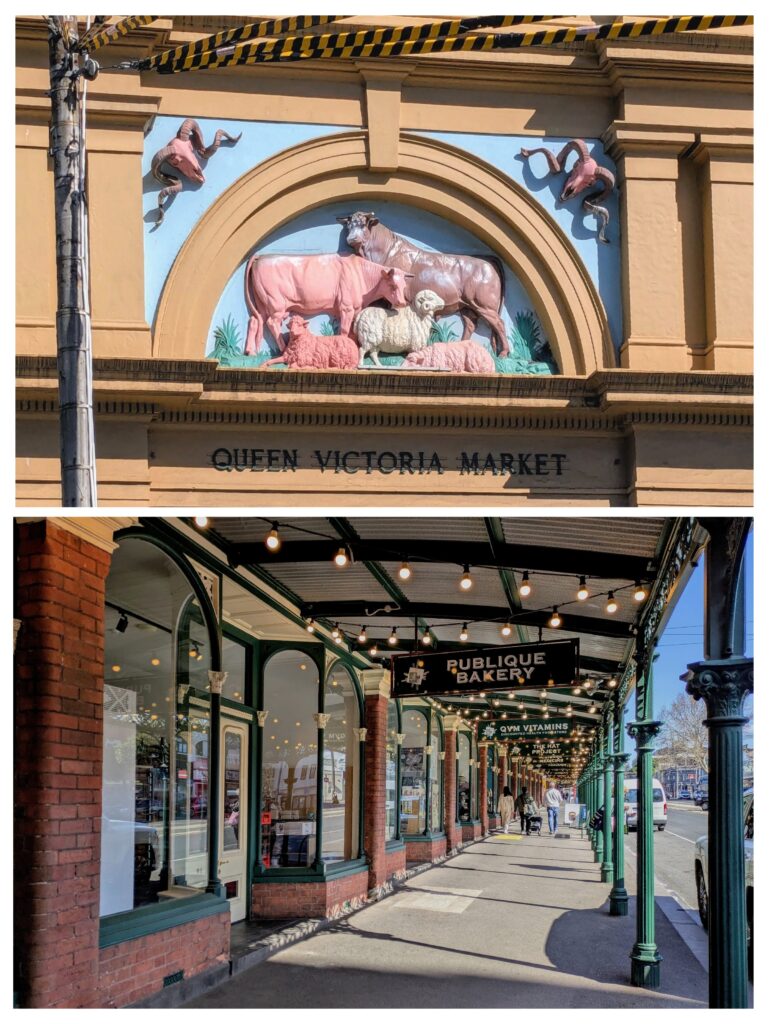
We started with a tram ride to The Queen Victoria Market in the center of the city. We wandered through the many stalls in the different sections, meat, fish, produce and lots of clothing and knick-knacks spread over 2 city blocks in 19th century buildings.
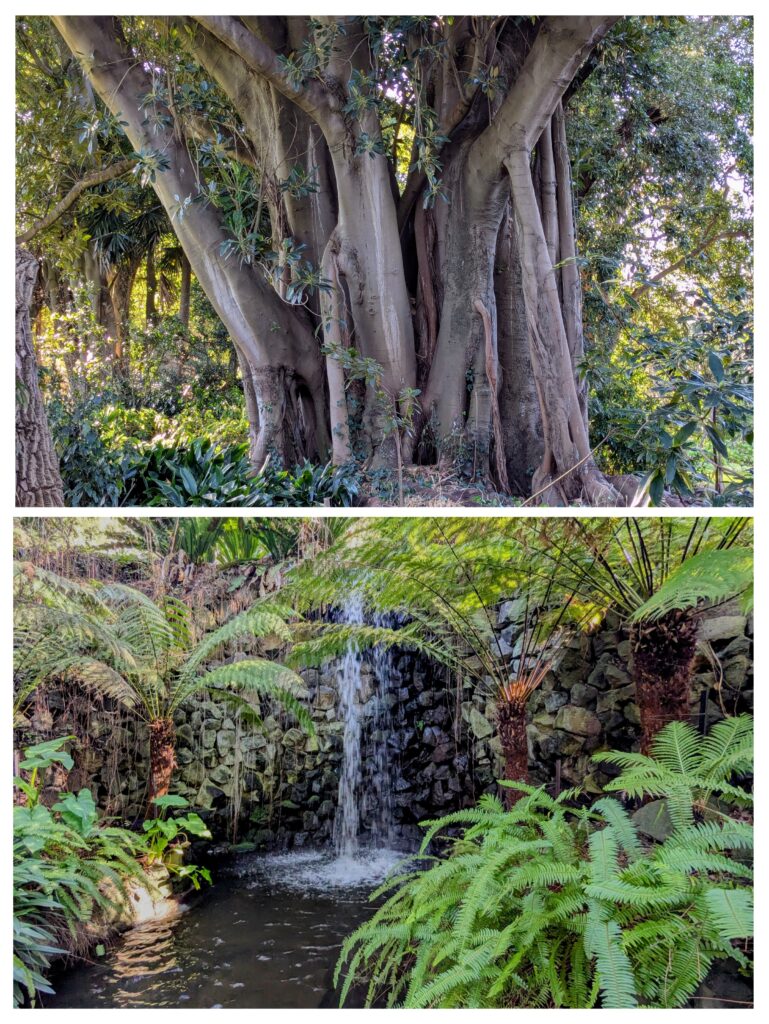
From the market we crossed town to the Botanic Garden and meandered along the forest paths.
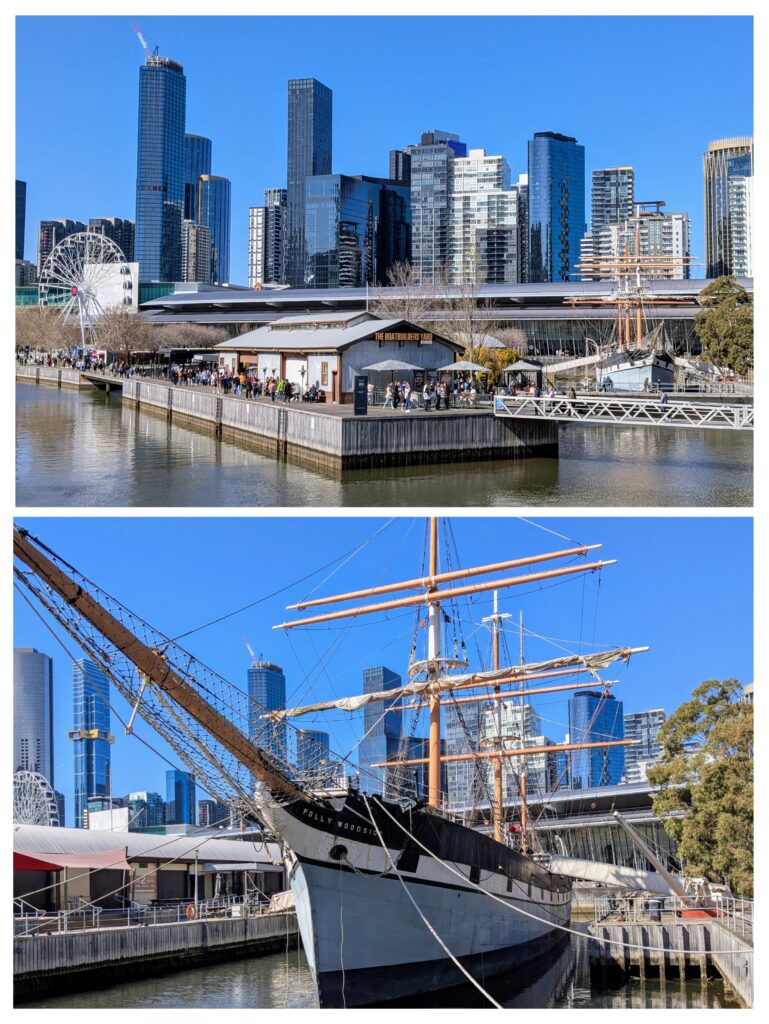
We then walked along the historic river front where the docks, ship building and repair, and factories were established in the mid 1800’s as Melbourne exploded in population due to the 1852 gold rush.
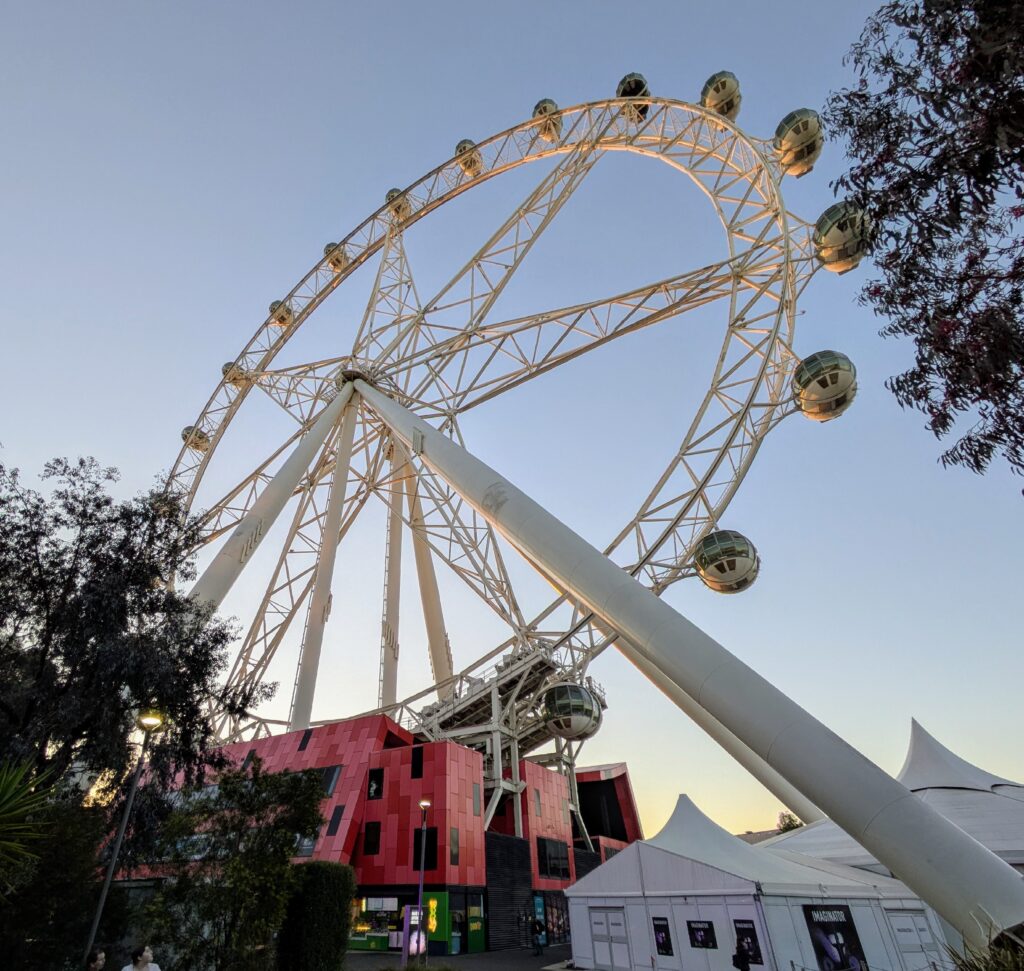
We completed our circuit of the city back at Docklands where we were staying, visiting the shopping center a few blocks from our hotel. The huge ferris wheel was not operating, maybe not until summer.
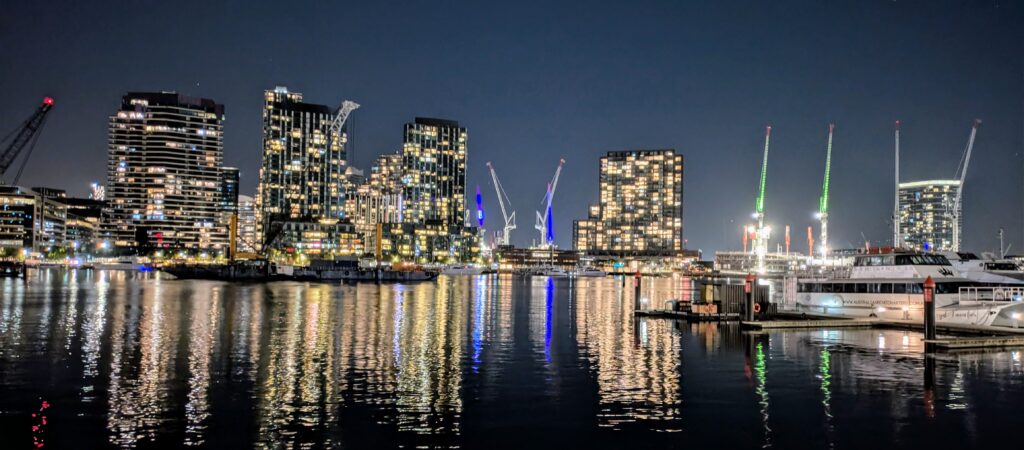
An evening walk along Docklands was lit up with city lights.
Aug 23, 2025 Melbourne
We traveled to Melbourne yesterday and settled into our ‘serviced apartment’ on the top 17th floor in the Docklands area near the train station.
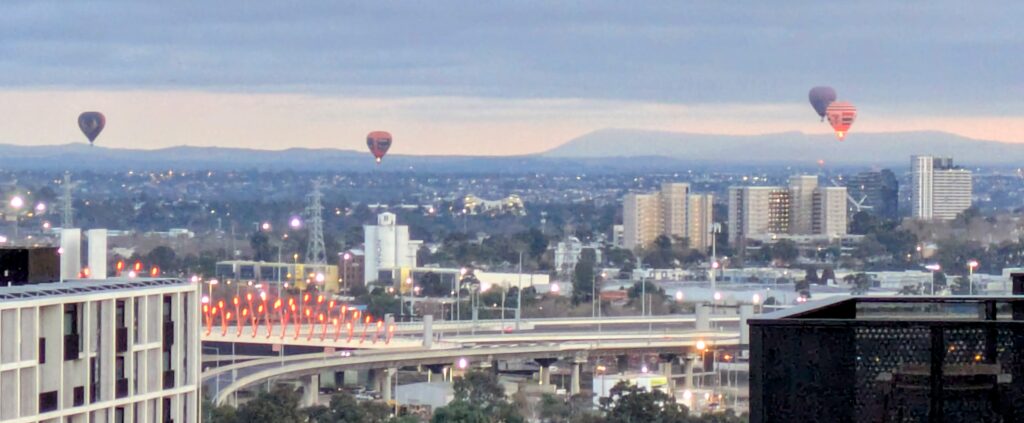
This morning we woke to a view of hot-air balloons over the city!
We headed out after breakfast to see the sights of the city.
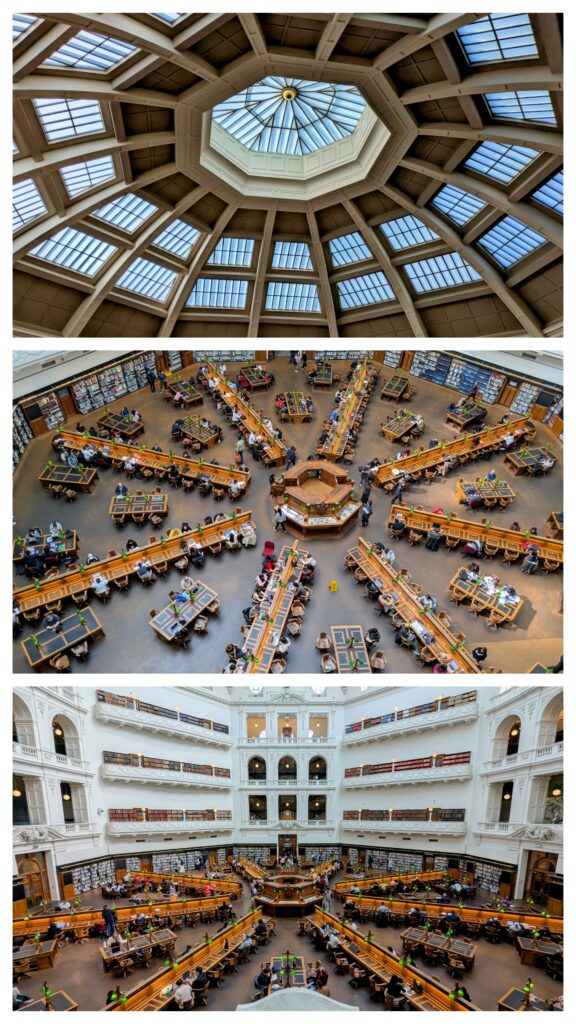
We took the bus into the CBD and stopped at the renowned State Library of Victoria. An absolutely fantastic building housing riveting exhibits! The Reading Room is crowned by a dome that lets in natural light.
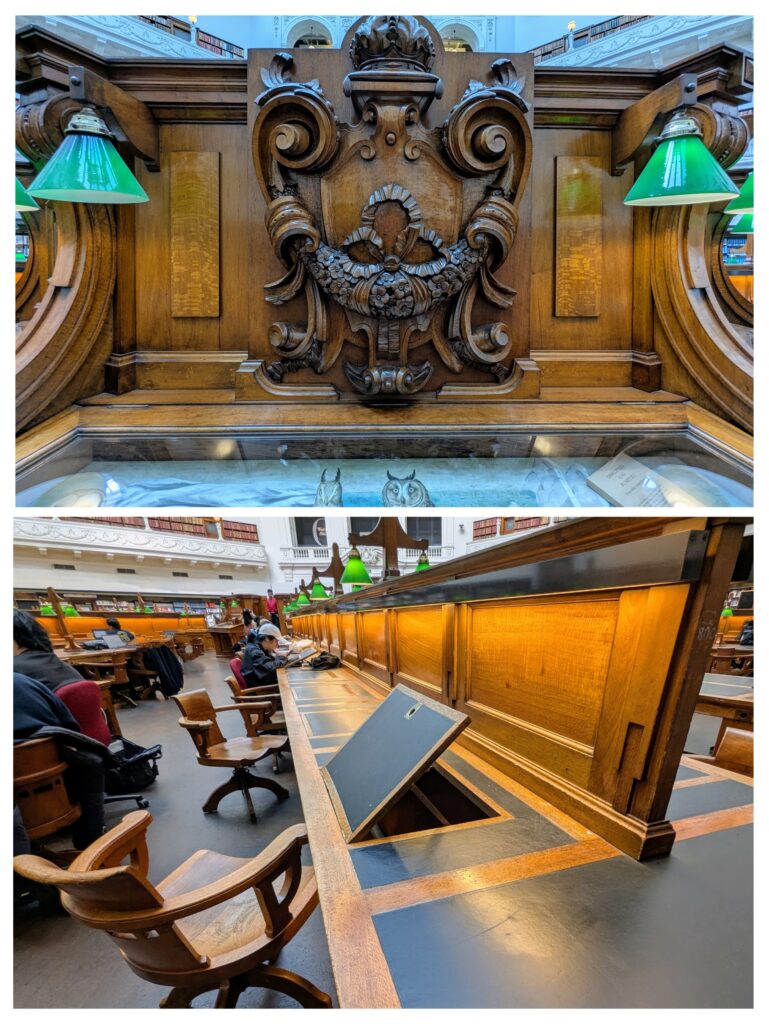
The details are beautiful!
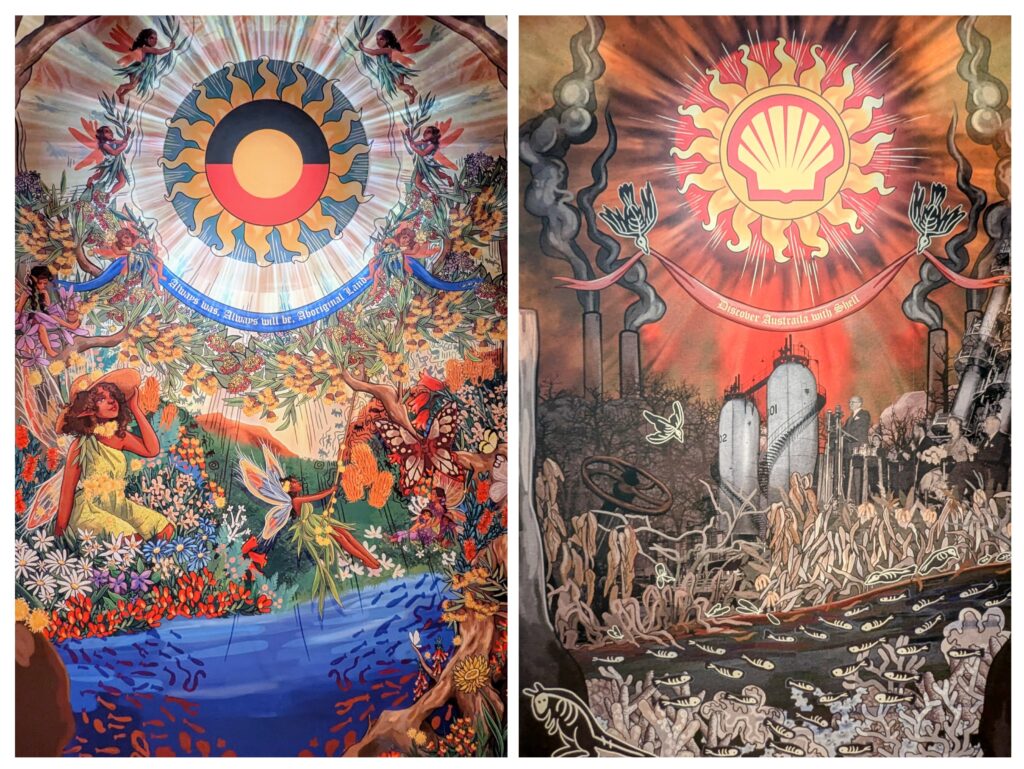
A current exhibit is about Misleading Information or Misinformation. This section told the story of a PR campaign by Shell oil in the 1960’s “See Australia with Shell”. The marketing used fairies and beautiful iconic Australian images. An artist recreated the scenes using ‘blak’ fairies and a true depiction of the ravages of the oil industry on the natural environment.
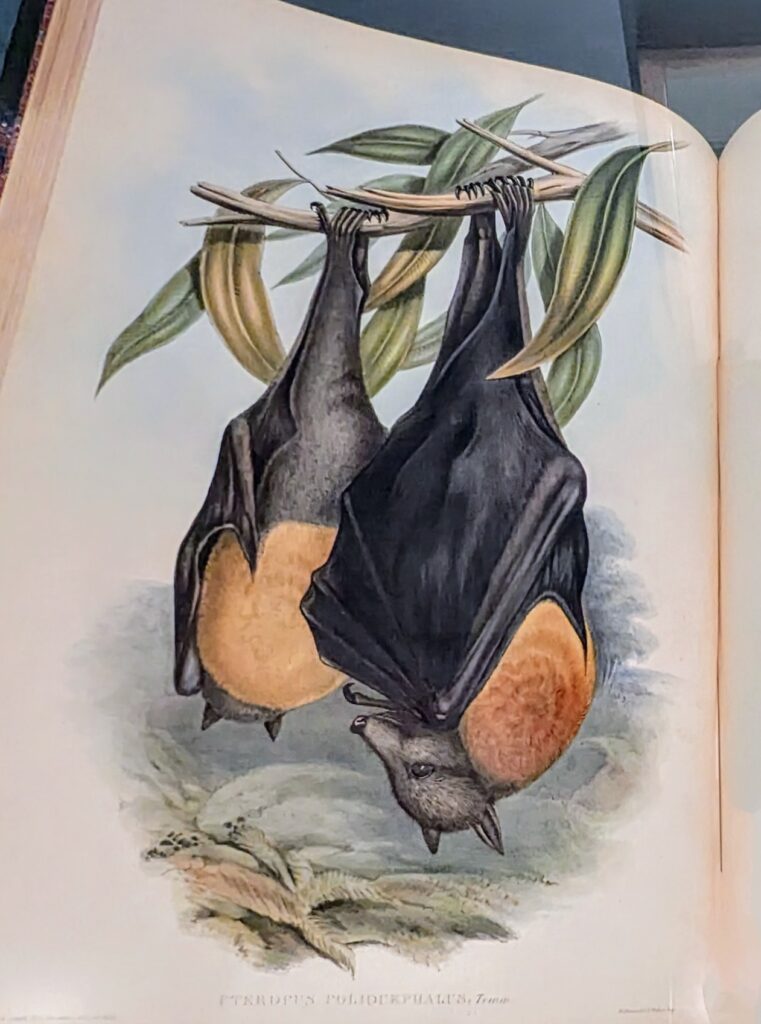
Of course books are the main focus in a library, and they have wonderful displays of their collection. This caught my eye, the gray faced flying fox!
Aug 21, 2025 River, Walk
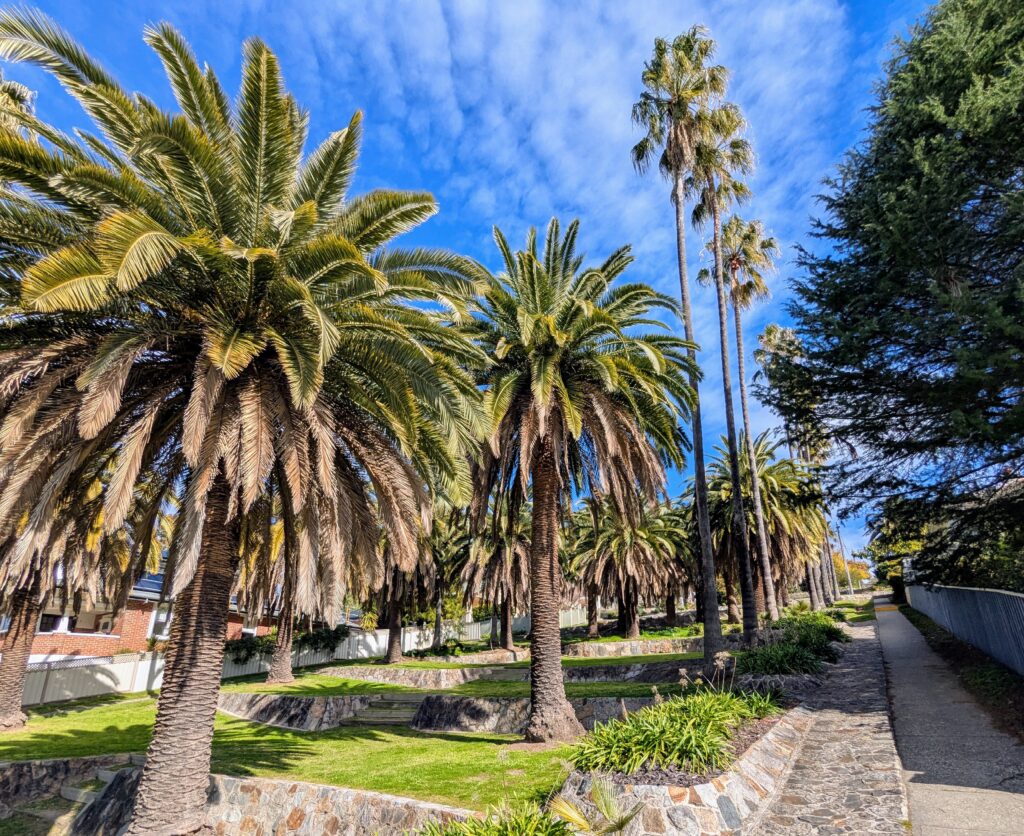
Our hike today started with a long walk up to Monument Hill above town. The palm lined walkway gives a very tropical vibe!
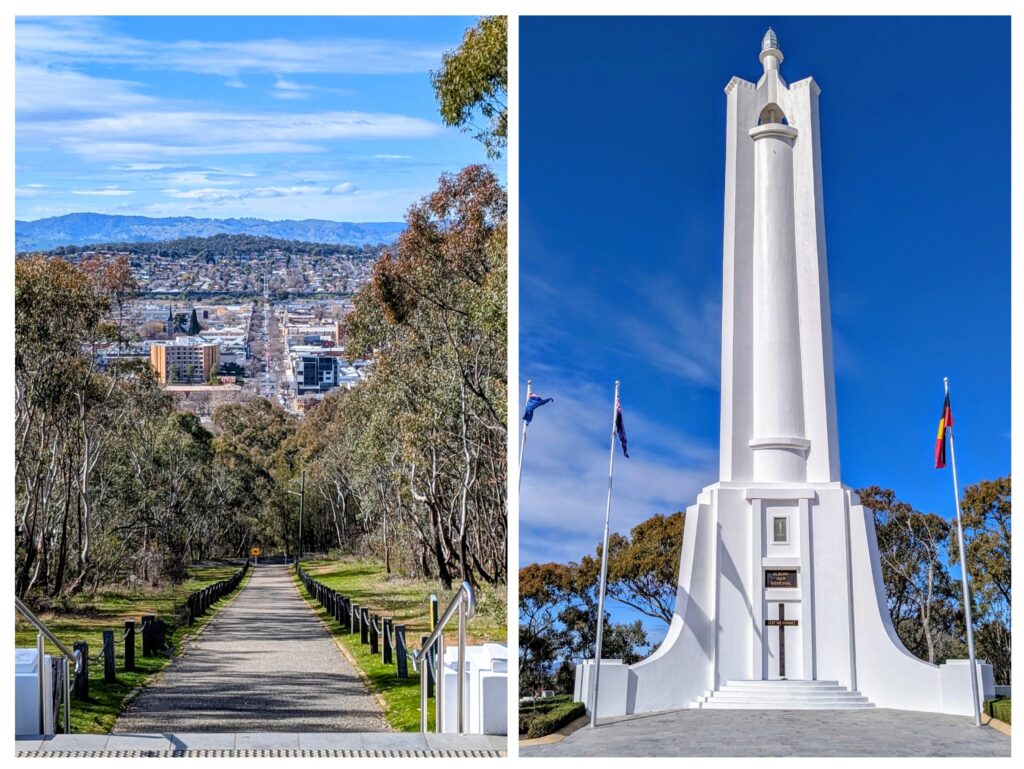
At the top is the “Lest We Forget” war memorial, memorializing service-people in all wars and skirmishes Australia has been involved in since the Boer War from 1899. Obviously humans do forget, all too readily!
Descending from the heights of Monument Hill we passed the Botanic Garden and started along the riverwalk, past the Flying Fox colony to the Sculpture walk.
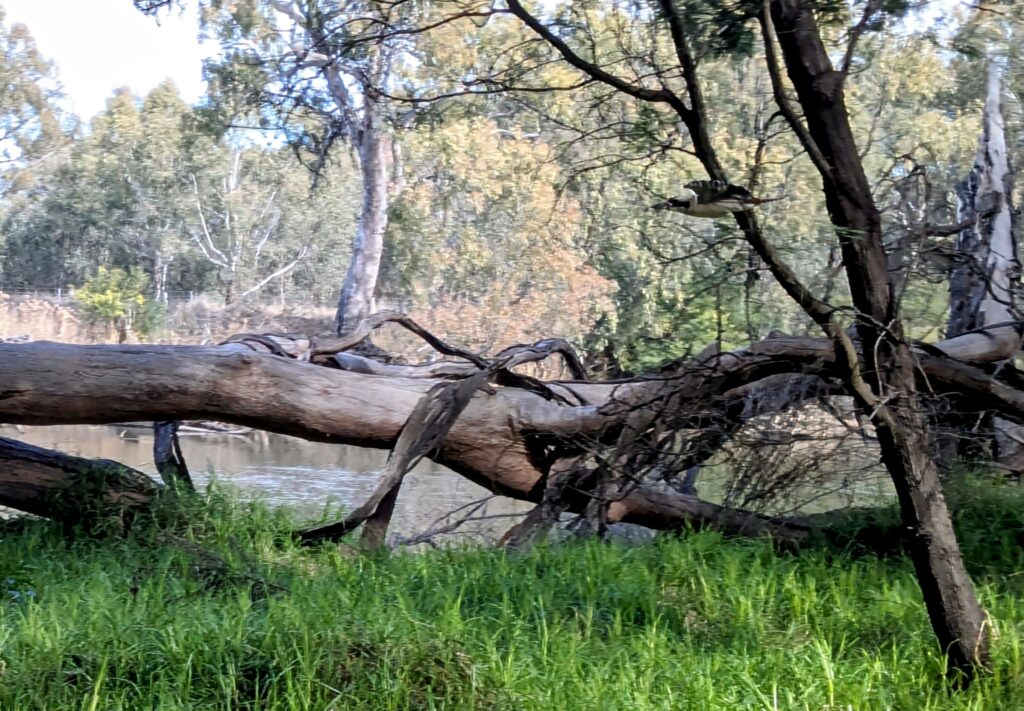
We heard, then spotted, a kookaburra! I got a quick photo as it flew to the left past us (in the right of the frame).
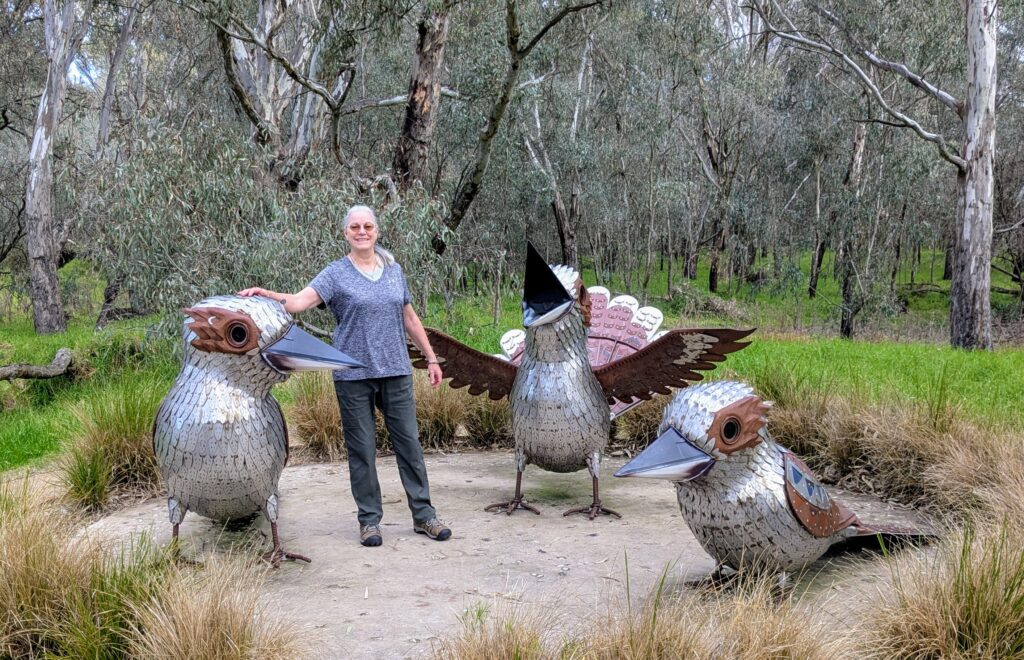
A better image of kookaburras along the Sculpture Walk!
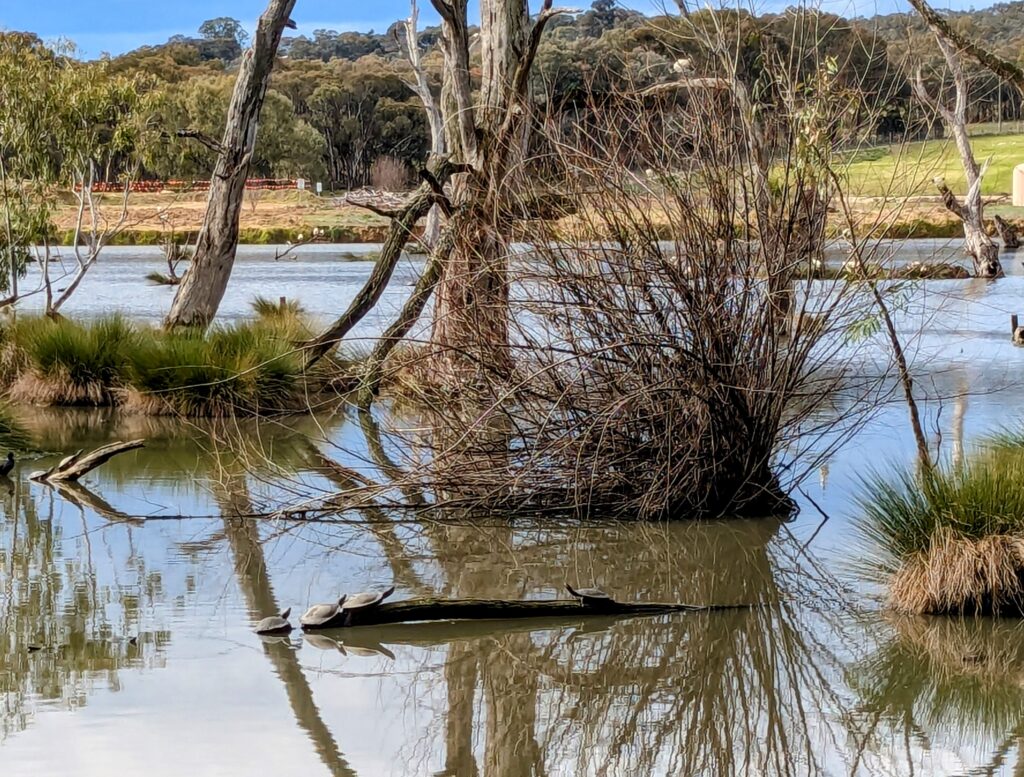
Native turtles in the Murray river.
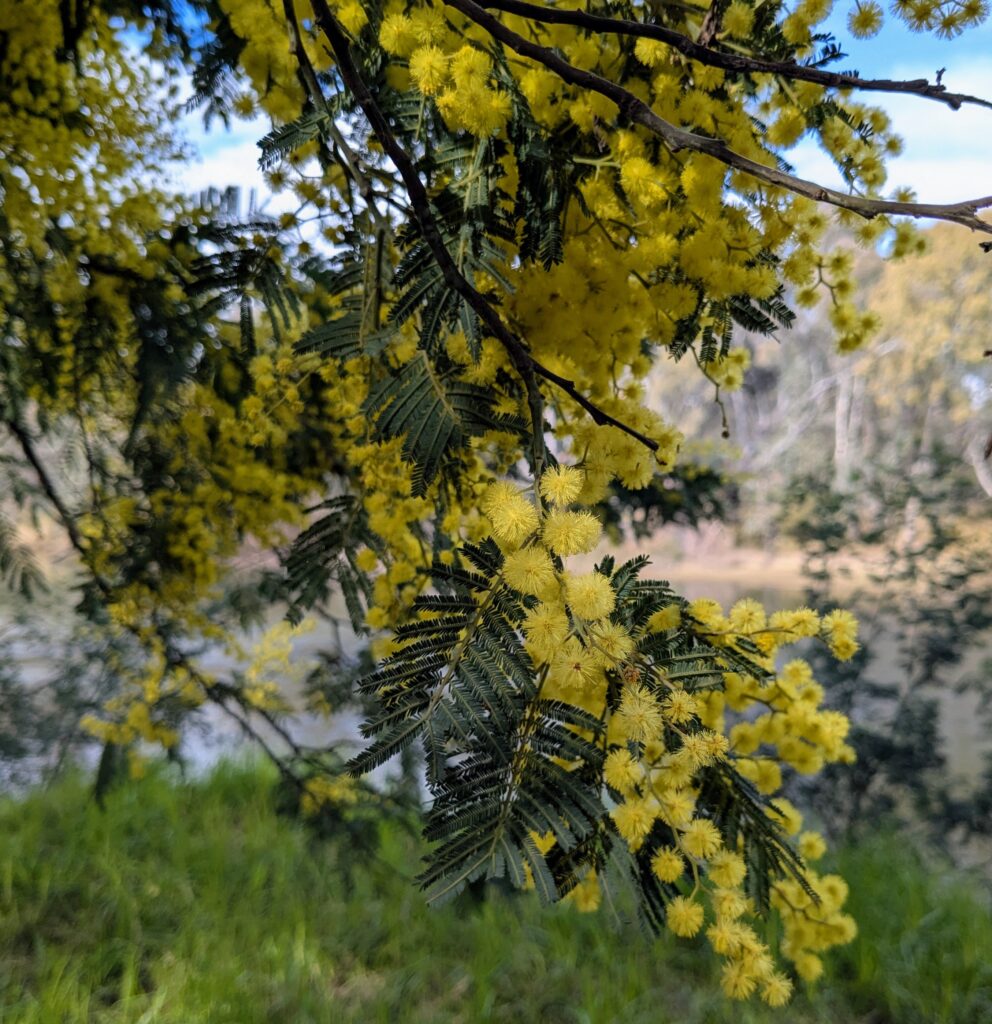
All around us were fragrant flowering native fern-leaf wattle trees. The scent in some places was incredibly overpowering!
Aug 20, 2025 River, Town
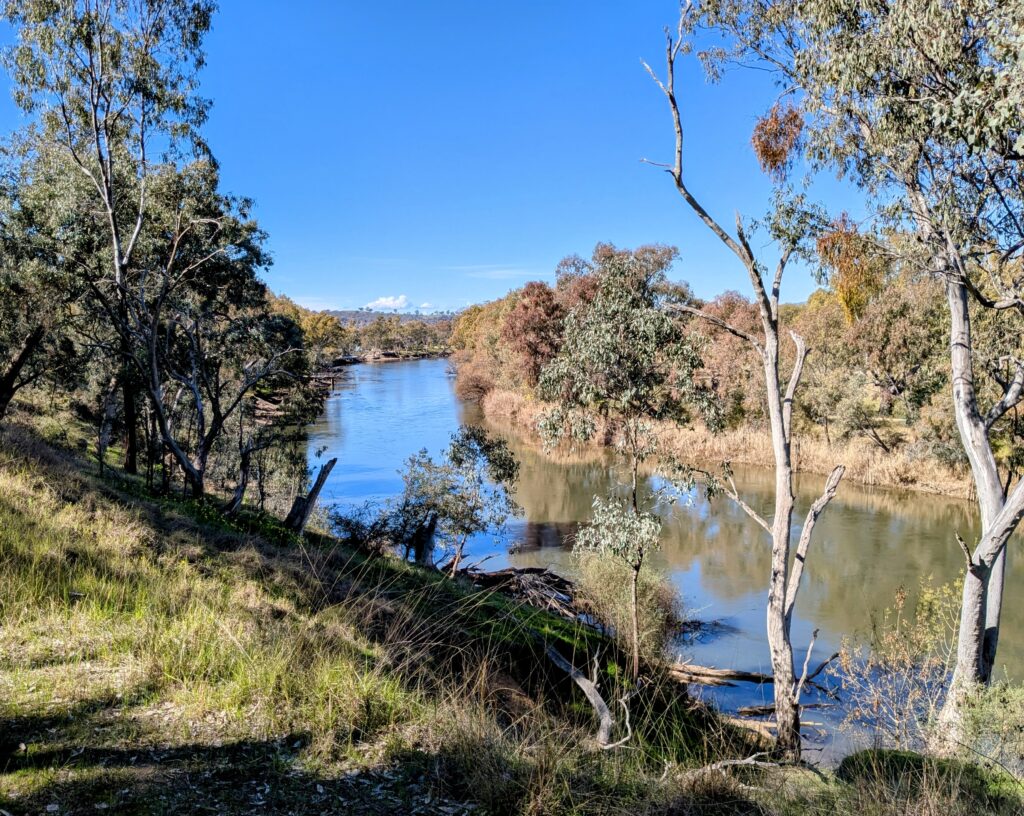
We started our first full day in Albury with a walk along the Murray river, a short distance from our B&B. It was a glorious sunny, warm day.
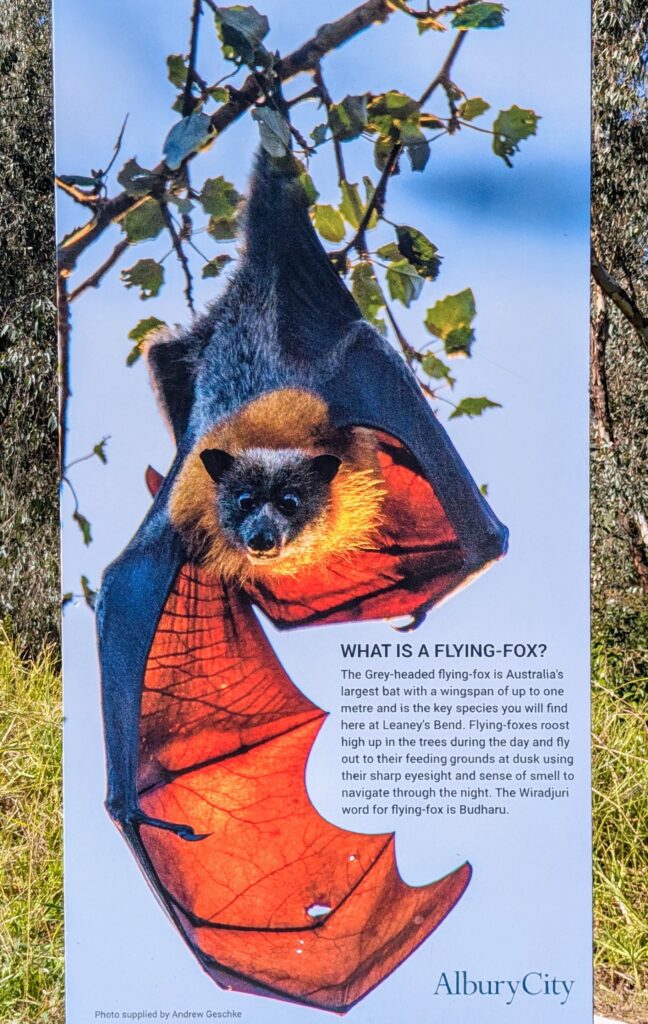
We came to an observation bench where we could see a colony of several hundred flying foxes hanging in a small group of trees, looking like dark pendulous fruit. The phone/camera photos did not do justice to the scene, so here is the information provided at the site.
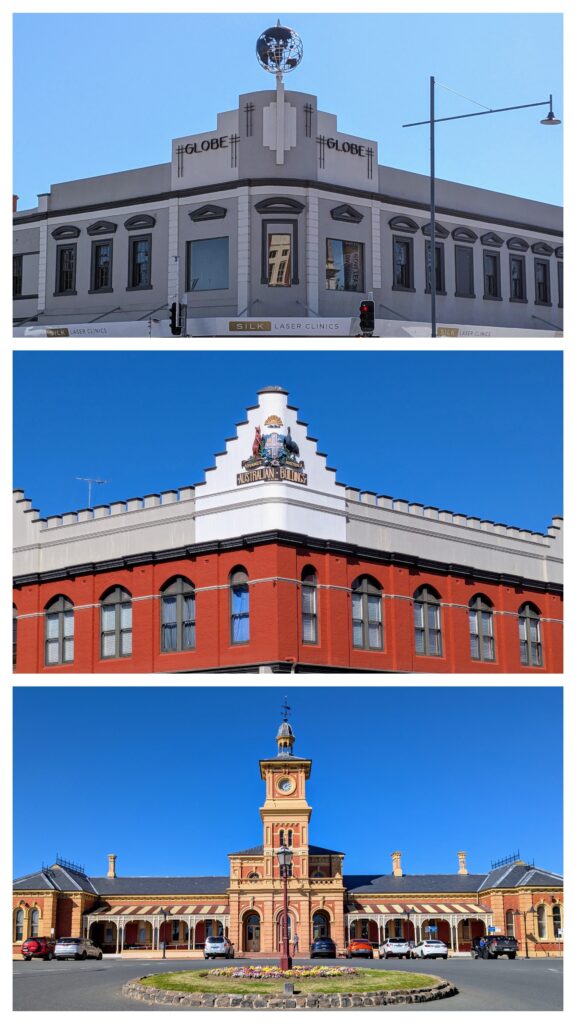
We then backtracked into town and walked through the CBD (Central Business District) and admired the mid 19th century architechture. The lower picture is of the Albury train station.
The Albury train station has the distinction of having the longest passenger platform in Australia, due to the fact that trains had to stop there to change carriages because the railway tracks in Victoria were not the same gauge as those in New South Wales! The tracks were not synchronized to standard gauge until 1962! Even Mark Twain thought this was ludicrous;
“In his book Tramps Abroad, writer Mark Twain in 1895 wrote of the break of gauge at Albury and changing trains: “Now comes a singular thing, the oddest thing, the strangest thing, the most unaccountable marvel that Australia can show. At the frontier between NSW and Victoria our multitude of passengers were routed out of their snug beds by lantern light in the morning in the biting cold to change cars. Think of the paralysis of intellect that gave that idea birth, imagine the boulder it emerged from, on some petrified legislator’s shoulders.”[45]“
Aug 19, 2025 Albury
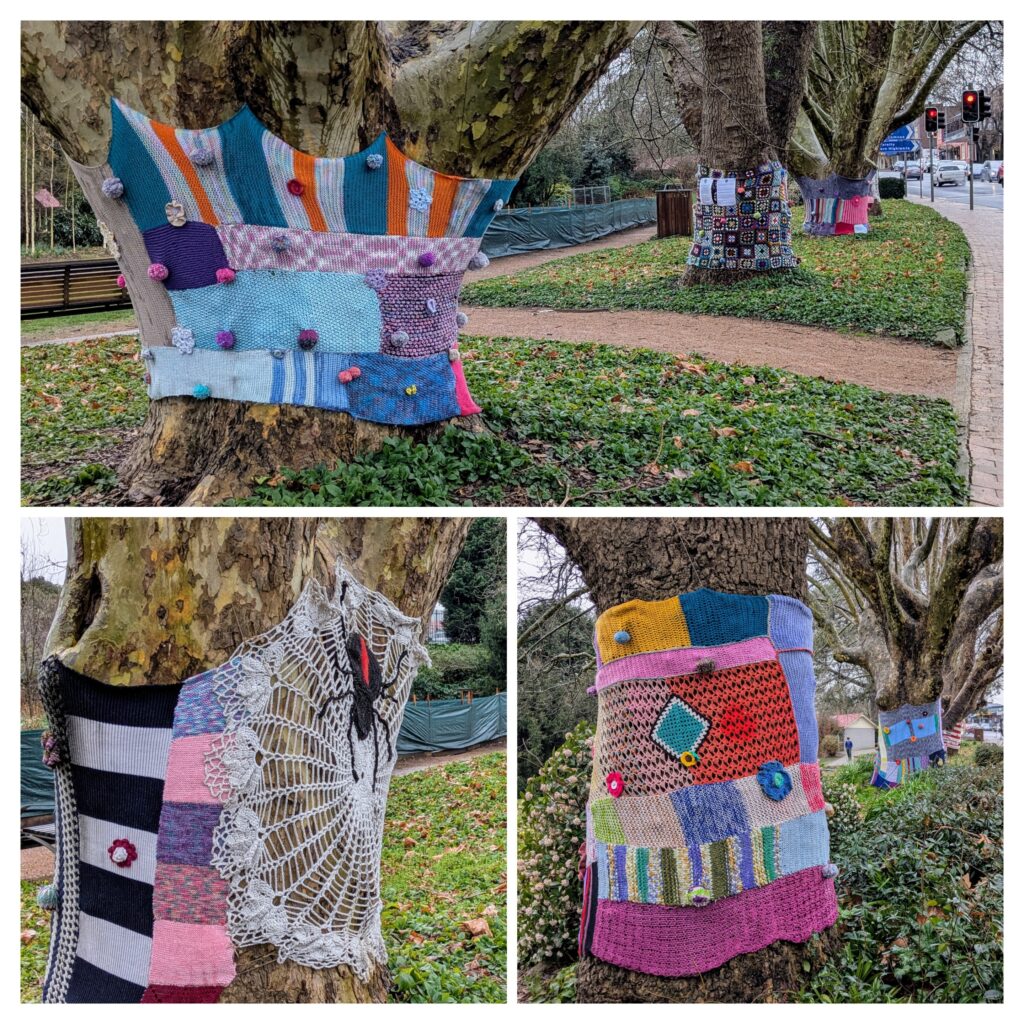
This morning we walked from our hotel to the train station past this park where it’s so cold even the trees wear sweaters!
Our almost 6 hour train ride dropped us in Albury, a town on the border between the states of New South Wales and Victoria, divided by the Murray river.
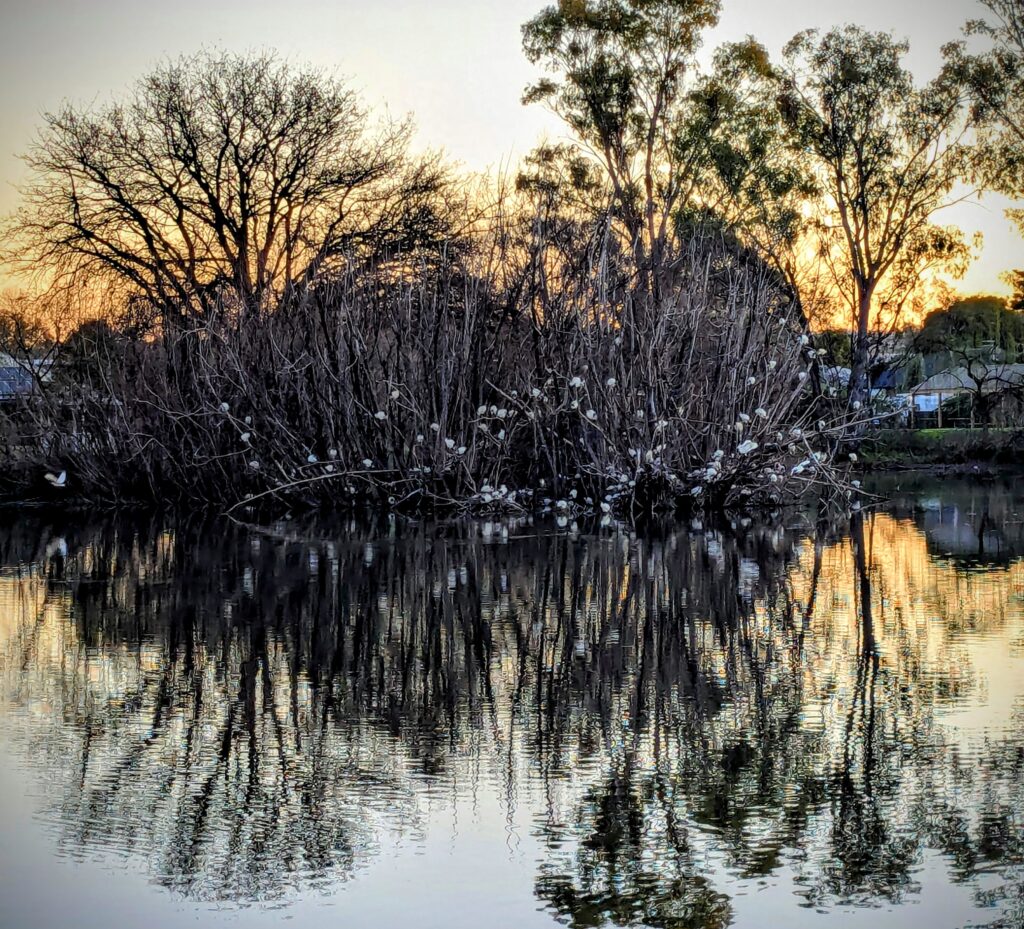
A small pond near our B&B held a flock of Australian white ibis. They were squawking as we walked by on our way back from the grocery store.
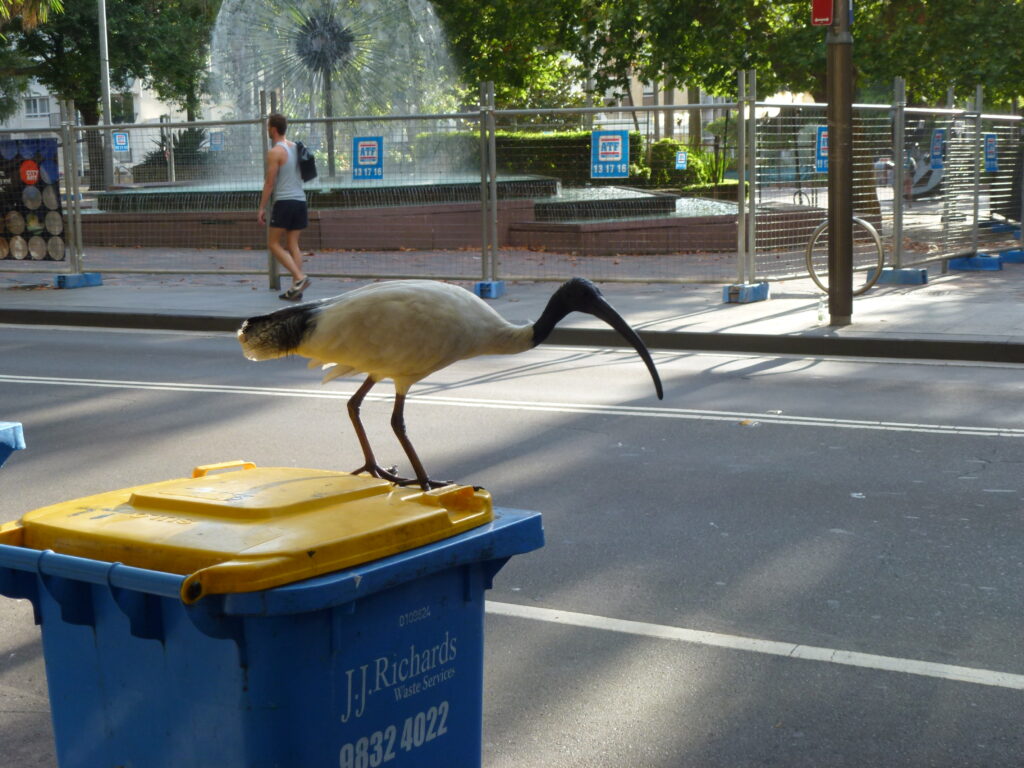
They are commonly known here as “bin chickens” or “tip turkeys” due to their spread into urban areas where they feed on the garbage left by humans!






















